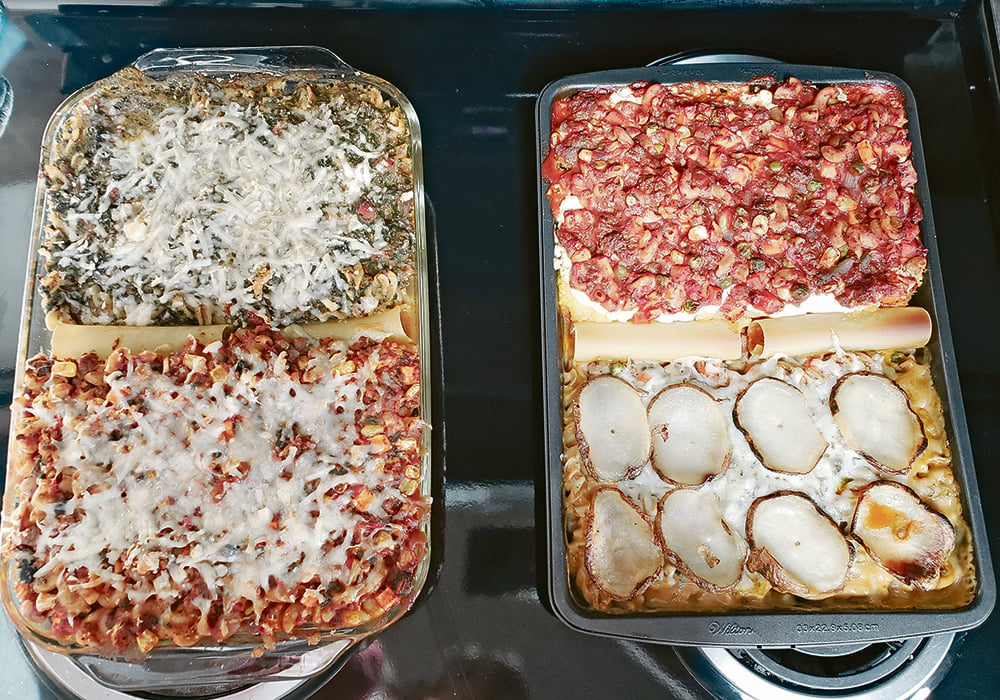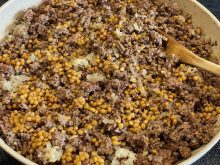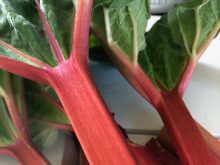Feeding a hungry crew who are working in the field takes imagination, ingenuity and determination to provide a variety of nutritious meals and snacks.
TEAM Resources recently held a contest looking for readers’ ideas on how to keep a crew fed. Here are more of their entries.
Erika Altwasser of Yellow Grass, Sask., shared that her crew, consisting of her husband and son, eat packed lunches from a cooler bag with ice packs. Lunch includes a sandwich on bread or in a wrap, with lettuce.
Read Also

Nutritious pork packed with vitamins, essential minerals
Recipes for pork
For extra protein she will add a boiled or pickled egg, a piece of cheese and a dill pickle. She said the guys like the cheese and pickles packed together for a “pickley cheese” flavour.
For a treat, a brownie or oatmeal cookie are durable. Cucumber, celery and carrot sticks are in another container, while trail mix, an apple or segmented orange give some snack options. Milk is also added in a container.
For days when the crew can come to the house to eat, Erika serves a one-dish meal like stew or chili, so it can be eaten quickly. Desserts are always required, something that can be taken in hand back out to the field like cookies or brownies.
If extra people show up for lunch, to stretch a pot of chilli she will make “ranch style chilli” by dropping one or two eggs per person on top of the simmering chilli and putting on the lid until the eggs have poached. Plates of buns, homemade or store-bought, are also served.
Having pre-made coleslaw mix on hand, storing carrot and celery sticks in containers of water for freshness and batches of cookies in the freezer are great time savers.
Tins of salmon, tuna, and flakes of ham are handy for a variety or when the cold cuts run out. Or there is always peanut butter or egg salad.
Two in one casserole
Jackie Kellington shared that she likes to create more choice without creating more dishes. When she has a two-pound package of hamburger she will cook it up and then divide it between four casserole recipes. She will put two recipes in a 9×3 inch (22×33 centimetre) pan creating a division between the two recipes with a large noodle. She then freezes the dish for meals during seeding. Jackie feels this cuts the dishes and prep work down significantly and gives her variety for field meals. She made a vegetable beef and an Italian casserole in one pan and ole polenta and sweet potato enchilada stack in the other casserole.
Meatballs
Pamela Pidwerbesky shared that sweet and sour meatballs are a “family favourite comfort food”.
She makes the meatballs and freezes them in bags after they are baked.
This is handy for use at a later date or can be given to her children to take home with them for a quick home-cooked meal.
Her recipe is adaptable for small crews or for large harvest crews.
The meatballs and the sauce recipes can be doubled. Add a pot of spaghetti or rice and a salad and the meal is complete.
The meatballs only have salt and pepper because the sauce is very flavourful. Add more seasoning if using for meatloaf, burgers or pasta sauce meatballs.
Sweet and sour meatballs
Yield 40 to 60 meatballs, depending on size.
Meatballs:
- 2 lbs. lean ground beef 1 kg
- 1 c. rolled oats 250 mL
- 1/4 c. onion, finelychopped 60 mL
- 1 egg
- 1/4 c. milk 60 mL
- salt and pepper to taste
- Combine all ingredients in a bowl, mixing well. Roll into balls of desired size.
- Place on cookie sheet lined with parchment paper and bake at 375 F (190 C) for 25 to 30 minutes.
- Remove from oven.
At this point, meatballs can be cooled and frozen for use at a later date.
Sweet and sour sauce:
- 2/3 c. vinegar 150 mL
- 1 c. sugar 250 mL
- 1/4 c. ketchup 60 mL
- 3 tbsp. soy sauce 45 mL
- 1 1/2 c. cold water 375 mL
- 3 tbsp. cornstarch 45 mL
- 1 14 oz. can pineapple tidbits, drained 398 mL
- Combine vinegar, sugar, ketchup, soy sauce and one cup cold water in a large saucepan. Bring to a boil.
- Combine cornstarch and one-half cup cold water, add to boiling mixture to thicken.
- Place meatballs in a casserole dish and pour the sauce over the meatballs. Sprinkle with pineapple tidbits and cover.
- Place in 325 F (160 C) oven and bake for one hour.
Banana day cake
From Robinne Hurt of Crossfield, Alta.
When cooking for one or two, the cake ingredients could be halved to make a smaller cake or about a dozen cupcakes.
- 2/3 c. margarine or butter 150 mL
- 1 2/3 c. sugar 400 mL
- 3 eggs
- 1 1/4 c. mashed, very ripe bananas 310 mL(about 3 medium bananas)
- 2/3 c. buttermilk 150 mL
- 2 1/3 c. flour 575 mL
- 1 1/4 tsp. baking powder 6 mL
- 1 1/4 tsp. baking soda 6 mL
- 1 tsp. salt 5 mL
- 2/3 c. chopped walnuts (optional) 150 mL
Topping:
- 1/2 c. brown sugar 125 mL
- 3 tbsp. butter 45 mL
- 1/4 c. milk or cream 60 mL
- 1/2 c. coconut 125 mL
- Preheat oven to 350F (180C).
- Grease a 13x9x2-inch (22x33x4 cm) cake pan or 18 muffins.
- Cream the margarine or butter and sugar together, add eggs, bananas and buttermilk and beat well to combine. Measure flour into a sifter or sieve, add baking powder, baking soda and salt and sift into batter, add walnuts and mix well to combine.
- Pour into prepared pan(s). Bake in preheated oven approximately 45 minutes for large pan or 25 to 35 minutes for muffin pans.
- During last 10 minutes of baking time, prepare topping.
- Place the brown sugar, butter, milk and coconut into a wide bottom saucepan. Heat on low heat until butter melts. Turn stove to medium, cook until mixture boils. Boil one minute.
- Once cake is cooked spread topping mixture over the cake.
- Place under broiler and broil until topping is bubbling.
- Served warm or cold.
Robinne shared that she feeds a crew of two to 10 people, depending on the day. She travels to various fields at times and would be interested in how other people get hot meals to the field.
She packs her pots into cardboard boxes that have a layer of newspaper on the bottom then a layer of towels. She puts the pots in then adds more towels. When she has a long way to go, she may add hot water bottles over the layer of newspaper and then again over the pots. Making her meal in a crockpot also helps to keep the food hot. She also packs items so the crew can wash up — a pail of warm water, towels and soap.
Chicken pockets
Wanda Oleniuk of Birch Hills, Sask., uses tin foil or parchment paper to create pockets in which to cook this chicken recipe. The pockets are easily transported to the field, which means there are no pots or plates to clean up after.
Serves six to eight.
- 6 chicken breasts
- 2 1/2 c. wild rice orwhite rice 625 mL
- 6–8 mushrooms, chopped
- 1 small onion, chopped
- 1 can mushroom soup
- 1 can water
- cheddar or mozzarella cheese, grated
- Cook rice, bake chicken in the oven then cut into small bite-sized pieces.
- Sauté mushrooms and onions.
- Mix soup and water together until smooth.
- Add rice, chicken, mushrooms and onions to soup and gently mix together.
- Put portion-size amounts on a large piece of foil or parchment. Top with grated cheese.
- Fold sides of foil together and fold under to seal. Fold foil together at the ends to seal. Put on a cookie sheet and bake in 350 F (180 C) oven until hot, about 30 minutes.
- Pre-cooked potatoes or carrots or frozen vegetables could also be used instead of the rice.
- Serve with garlic toast.


















